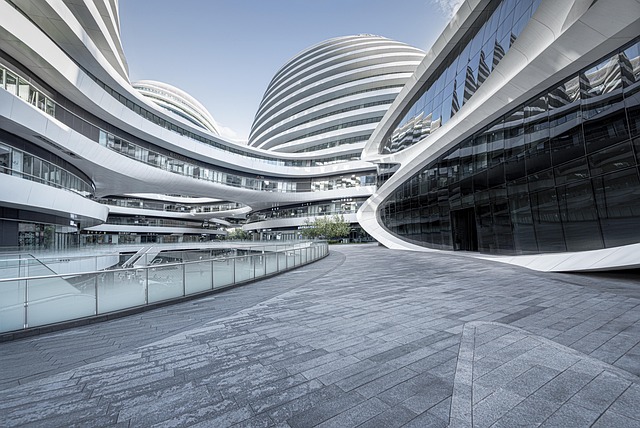Karachi's economy is a dynamic reflection of global trends and local shifts, with e-commerce growth disrupting traditional retail and real estate investments swinging due to infrastructure developments and population expansion. Despite short-term volatility influenced by geopolitical tensions and consumer behavior changes, long-term growth prospects are predicted due to the city's strategic position, diverse economy, and ongoing infrastructure and technology investments. Global economic forces significantly impact Karachi's market, with commodity price fluctuations and investment trends affecting various sectors. Informed decision-making is vital for navigating changing conditions and ensuring Karachi's economic resilience as a global business hub.
“Unraveling Karachi’s Market Story: A Comprehensive Analysis of Recent Trends and Global Impacts. This article offers an in-depth exploration of the dynamic Karachi market, dissecting its unique response to global economic shifts. We delve into the city’s recent market movements, examining trends within key sectors and their collective impact. By studying these factors, we aim to predict future behavior, providing valuable insights for investors and stakeholders navigating the intricate landscape of Karachi.”
- Market Dynamics in Karachi: A Closer Look
- – Examining recent trends and fluctuations in the Karachi market
- Global Influences on Local Markets: The Karachi Case Study
- – Exploring how global economic shifts impact specific regional markets, using Karachi as a microcosm
Market Dynamics in Karachi: A Closer Look

Karachi, as Pakistan’s economic powerhouse, exhibits a dynamic market landscape that reflects global trends and local dynamics. Recent movements in the city’s markets offer insights into shifting consumer behaviors and investment strategies. The rise of e-commerce has significantly impacted traditional retail, with online platforms capturing a larger share of the market, especially among younger demographics. This shift is evident in Karachi’s diverse shopping districts, where brick-and-mortar stores are adapting to stay competitive by integrating digital solutions.
Moreover, real estate investments have seen notable fluctuations, influenced by factors such as infrastructure development and government initiatives. The city’s ever-growing population and improving urban infrastructure have fueled demand for residential and commercial properties, leading to a robust property market. This has attracted both local and foreign investors, contributing to Karachi’s reputation as a thriving business center.
– Examining recent trends and fluctuations in the Karachi market

In recent times, the Karachi market has experienced a dynamic and unpredictable landscape, reflecting broader global economic trends. Investors have witnessed a rollercoaster of fluctuations, with the market showing both robust growth and sudden dips. This volatility is attributed to various factors, including geopolitical tensions, shifting consumer behaviors, and regulatory changes impacting the region’s economic stability. The Karachi Stock Exchange (KSE) has been at the forefront of these movements, with sectors such as energy, technology, and financial services leading the charge.
Analysts note that while short-term uncertainty persists, long-term prospects remain promising for the Karachi market. The city’s strategic position as a commercial hub and its diverse economy provide resilience against external shocks. Additionally, ongoing investments in infrastructure and emerging technological advancements are expected to drive future growth, attracting both local and international investors. These developments suggest that the Karachi market is poised for stabilization and potential gains in the coming years.
Global Influences on Local Markets: The Karachi Case Study

In recent years, global economic influences have significantly impacted local markets worldwide, and Karachi, as Pakistan’s financial hub, is no exception. International market trends often trickle down to cities like Karachi, affecting local businesses and investors. For instance, fluctuations in global commodity prices can sway the local economy, especially in a city reliant on trade and industry. Karachi’s diverse market landscape, ranging from bustling retail sectors to robust industrial zones, makes it sensitive to both domestic and international financial shifts.
The case of Karachi underscores the intricate relationship between global influences and regional economies. Major geopolitical events and policy decisions in foreign markets can have cascading effects on local stock exchanges, currency values, and investment patterns. As a result, businesses in Karachi must remain agile and responsive to these global dynamics, ensuring their strategies are adaptable to changing market conditions.
– Exploring how global economic shifts impact specific regional markets, using Karachi as a microcosm

Karachi, as Pakistan’s financial hub and one of the busiest cities globally, serves as an excellent microcosm to explore how global economic shifts impact regional markets. Any changes in the international economy, be it fluctuations in commodity prices or shifts in investment trends, have a tangible effect on Karachi’s vibrant market landscape. For instance, global demand for energy resources can significantly influence the local energy sector and its associated industries. Similarly, political stability and trade agreements at the global level can open new opportunities or disrupt existing supply chains, affecting the city’s diverse range of businesses, from manufacturing to services.
Understanding these dynamics is crucial as Karachi’s economic health directly impacts not just the national economy but also the lives of millions of people in the region. By examining how global events trickle down and manifest locally, policymakers, investors, and business owners can make more informed decisions, fostering resilience and adaptability in the face of changing market conditions.
